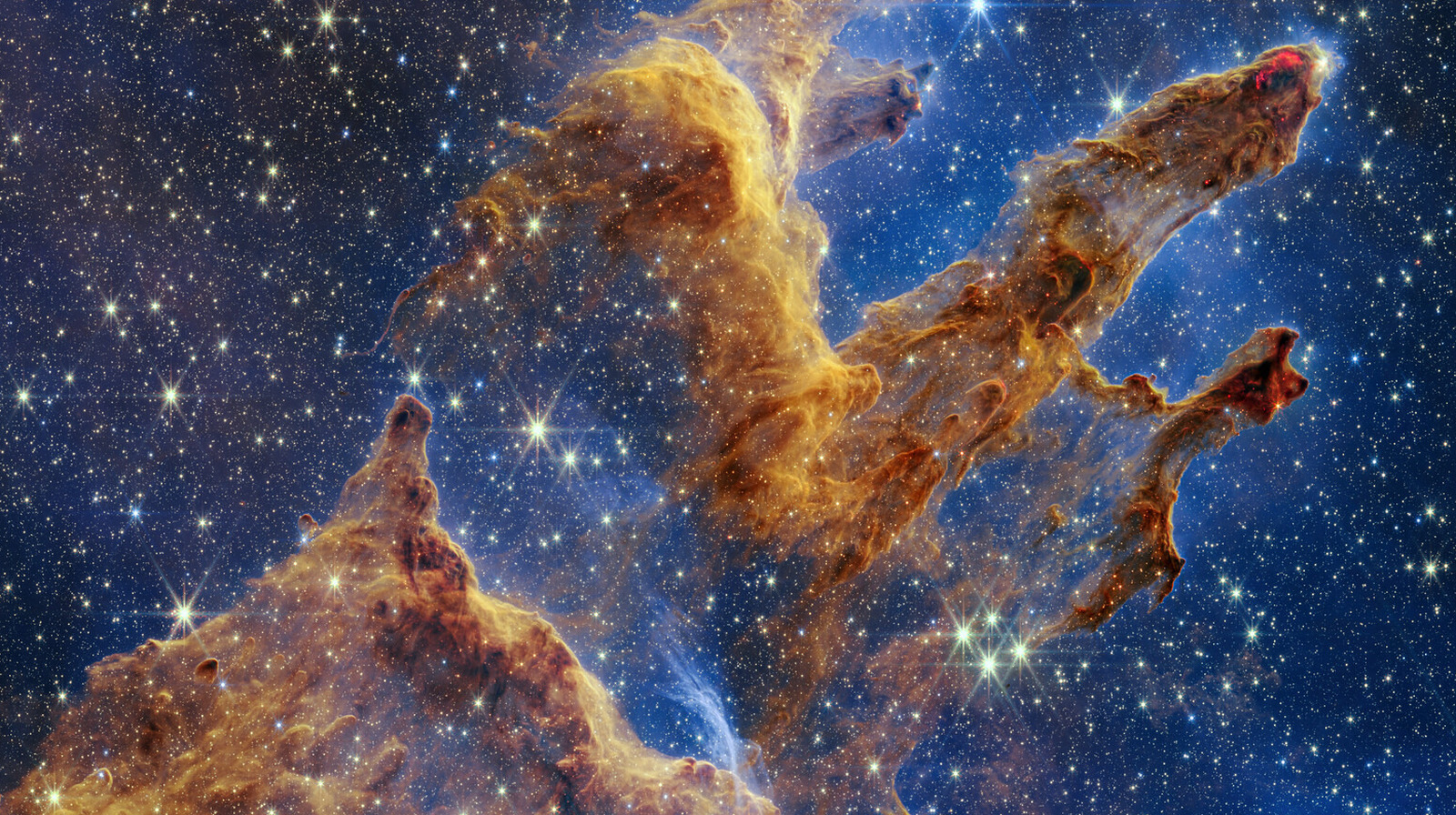
The Webb image is rather different from the older Hubble image, even though they are of the same target, because the two telescopes look in different wavelengths. Hubble looks primarily in the optical or visible light range, which is the same part of the electromagnetic spectrum that the human eye sees. But Webb looks in the infrared range, which is beyond the red part of the visible light range.
That means the dust structures of the pillars are semi-transparent to Webb because it uses its NIRCam instrument to look in the near-infrared range. This also means that you can see many, many more stars in the Webb image than the Hubble image, because all of the dust and gas block their light in the optical range, but not in the infrared. However, Webb scientists point out that although you can see many stars through the pillars, these are not galaxies. Instead, they are stars in the immediate vicinity of the pillars, and any background galaxies are still blocked off by the dust and gas which lurks between stars, called the interstellar medium.
Looking in the infrared makes it possible to pick out features of the pillars which would be otherwise invisible, like the glow of hydrogen molecules shown in red at the tips of two of the pillars. These molecules are highly energetic because of the jets of material being cast off by young stars around them.
Stay connected with us on social media platform for instant update click here to join our Twitter, & Facebook
We are now on Telegram. Click here to join our channel (@TechiUpdate) and stay updated with the latest Technology headlines.
For all the latest Technology News Click Here
